|
Africans in Colonial Mexico: Absolutism, Christianity, and Afro-Creole Consciousness, 1570-1640

ARC Magazine I

ARC Magazine III

ARC Magazine IV

ARC Magazine V

ARC Magazine VI

ARC Magazine VII

ARC Magazine VIII

Art in Barbados

Art in the Caribbean: an Introduction

The Art of the Cayman Islands: A Journey through the National Gallery Collection
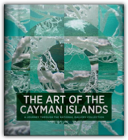
This overview, which also functions as the gallery's first collection guide, features essays on the history of art, the story of the National Gallery and its collection, and works by over 70 artists. Artists from Curacao: A cultural blend within the Kingdom

Barabajan Poems

Barbados Back in Time

Barbados Carolina Connection
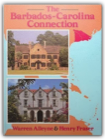
Barbados: Thirty Years of Independence

Becoming No Ordinary Pottery

Beyond Child Labour, Affirming Rights

Beyond the Fantastic: Contemporary Art Criticism from Latin America
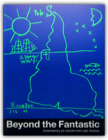
This anthology, edited by Cuban art historian and critic Gerardo Mosquera, offers a wide selection of writings by some of the most important cultural theoreticians of contemporary Latin America. Together they comprise a distinctive corpus of new theoretical discourses, critical of modernity and solidly and pragmatically anti-utopian. The collection balances traditional and popular aesthetic-symbolic production as well as Afro- and Indo-American presences in the visual arts, and covers the whole of the Americans, including the Caribbean and the United States. Contributors: Monica Amor. Pierre E. Bocquet. Gustavo Buntinx. Luis Camnitzer. Nestor Garcia Canclini. Ticio Escobar. Andrea Giunta. Guillermo Gomez-Pena. Paulo Herkenhoff. Mirko Lauer. Celeste Olalquiaga. Gabriel Peluffo Linari. Carolina Ponce de Leon Mari Carmen Ramírez. Nelly Richard. Tomas Ybarra-Frausto. George Yudice. Business, Government And Society

C. L. R. James Reader

In a life which reflected many of the distinctive features of the twentieth century (from his birth in Trinidad in 1901, to his death in Brixton, London, 1989), James made an outstanding contribution to debates on politics, history, art, literature and sport. His revolutionary vision has inspired social movements in the United States, Britain, Africa and the Caribbean. It remains central to any understanding of the modern world. Until now much of his work has remained inaccessible; but Anna Grimshaw brings together here both published and unpublished material to give us the essential C. L. R. James. Prepared in collaboration with James in his final year, this collection offers unique insight into the range and development of his life's work. It includes a selection of early fiction, the complete text of the play The Black Jacobins, numerous extracts from his personal archive and the classic essays, The Case for West-Indian Self-Government, Popular Art and the Cultural Tradition and Black Power. Canada and the OAS

Canouan Suite and Other Pieces

Caribbean Art

Caribbean Dispatches: Beyond the Tourist Dream

It offers an entertaining and idiosyncratic collection of personal perspectives on the Caribbean, by 28 writers of different backgrounds, for readers who want to get beneath the exotic surface of the tourist experience. It s not a guide book, but for the curious it s full of inside information, with the emphasis on variety, the unexpected and the intimate. It is the ideal companion for anyone fascinated by the Caribbean who wants to find out more, while for those who know the area already, it illuminates hidden corners and takes you further than you ve ever gone before... so gripping is it that you ll have read it on the plane before you even get there! Contributors include: · Shake Keane · Oonya Kempadoo · Ian McDonald · Mark McWatt · Opal Palmer-Adisa · Polly Pattullo · Olive Senior · Marina Warner · Anthony C. Winkler Caribbean Elegance
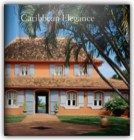
Caribbean Examinations Council Syllabus: Art and Design

Caribbean Examinations Council Syllabus: Visual Arts

Caribbean Journeys: An Ethnography of Migration and Home in Three Family Networks

The migratory journeys of the families in this study began more than sixty years ago, when individuals in the three families left home in a British colonial town in Jamaica, a French Creole rural community in Dominica, and an African-Caribbean village of small farmers on Nevis. Olwig follows the three family networks forward in time, interviewing family members living under highly varied social and economic circumstances in locations ranging from California to Barbados, Nova Scotia to Florida, and New Jersey to England. Through her conversations with several generations of these far-flung families, she gives insight into each family’s educational, occupational, and socioeconomic trajectories. Olwig contends that terms such as “Caribbean diaspora” wrongly assume a culturally homogeneous homeland. As she demonstrates in Caribbean Journeys, anthropologists who want a nuanced understanding of how migrants and their descendants perceive their origins and identities must focus on interpersonal relations and intimate spheres as well as on collectivities and public expressions of belonging. Caribbean Shadows & Victorian Ghosts: Women's Writing and Decolonization

Colonial Blackness: A History of Afro-Mexico

Coming, Coming Home: Conversations II

Contradictory Omens

Country Cultural System Profile: Barbados

Critical Perspectives on Jean Rhys

Cuba Mi Amor

Cuban Artists Across the Diaspora: Setting the Tent Against the House

Approaching the Cafeteros' art from a cultural studies perspective, O'Reilly Herrera examines how the history of Cuba informs their work and establishes their connections to past generations of Cuban artists. In interviews with more than thirty artists, including José Bedia, María Brito, Leandro Soto, Glexis Novoa, Baruj Salinas, and Ana Albertina Delgado, O'Reilly Herrera also raises critical questions regarding the many and sometimes paradoxical ways diasporic subjects self-affiliate or situate themselves in the narratives of scattering and displacement. She demonstrates how the Cafeteros' artmaking involves a process of re-rooting, absorption, translation, and synthesis that simultaneously conserves a series of identifiable Cuban cultural elements while re-inscribing and transforming them in new contexts. An important contribution to both diasporic and transnational studies and discussions of contemporary Cuban art, Cuban Artists Across the Diaspora ultimately testifies to the fact that a long tradition of Cuban art is indeed flourishing outside the island. Curating In The Caribbean

Diversity is Power

Encuentros

Encuentros

Engendering History

Film and Film Culture

The Formations of Modernity: Understanding Modern Societies an Introduction Book 1

Designed as an introduction to modern societies and modern sociological analyses, this book is of value to students on a wide variety of social science courses in universities and colleges and also to readers with no prior knowledge of sociology. Selected readings from a broad range of classical writers (Weber, Durkheim, Marx, Freud, Adam Smith, Montesquieu, Hobbes, Locke, Rousseau) and contemporary thinkers (Michael Mann, E.P. Thompson, Edward Said) are integrated in each chapter, together with student questions and exercises. Great House Rules: Landless Emancipation and Workers' Protest in Barbados, 1838-1938

The formerly enslaved community, persisted with its protest and rebellion; Wage protest in the sugar fields intermingled with the civil rights agitation on the assembly floor, finally led to open warfare in the form of the 1876 Rebellion. Against this background of 19th century popular protests and workers’ agitation, the modern labour movement, the anticolonial campaign, and agitation for democratic governance came to maturity by the 1920s. The final breach in the walls of the structures of white supremacy was achieved in 1937 when the workers took to the streets and field with arms under the ideological leadership of the charismatic Garveyite organizers, Clement Payne. It had taken a full century of struggle after emancipation to see, even at a distance, the freedom that was promised by the abolition of slavery legislation. Haiti: Reflections

The History of the Caribbean Artists' Movement 1966-1972

Identités et cultures 2 : Politiques des différences

Identites et cultures NE

Jamaican Art

The Legends and Stories of Old Panama

Love & Responsibility: The Dawn Davies Collection

Miscelanea II

Modern Jamaican Art

National Cultural Policy for Barbados 2010

New Art of Cuba

Pressing the Point

Refusal of the Shadow

Reggae Explosion

The Repeating Island: The Caribbean and the Postmodern Perspective

Report of the Committee for National Reconciliation

Report of the Committee for National Reconciliation

Rural Images: Estate Maps in the Old and New Worlds

Generously illustrated with reproductions of rare manuscripts, including 8 color plates, these accounts reveal how estate maps performed vital economic and cultural functions for property owners until the end of the nineteenth century. From plans of plantations in Jamaica and South Carolina to a map of Queens College, Cambridge, handsome examples show that estate maps formed an important part of the historical record of property ownership for both individuals and corporations, and helped owners manage their land and appraise its value. Exhibited in public places for pleasure and as symbols of wealth, they often displayed elaborate cartouches and elegant coats-of-arms. See Me Here

Ship Shape

Under The Sun

Why not a Woman?

World One Minutes
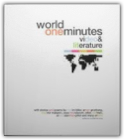
Written in Bones: How Human Remains Unlock the Secrets of the Dead
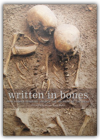
This compelling and scientifically-accessible book: Provides 38 case studies examining the discoveries at archeological sitesIntroduces readers to ancient peoplesIncludes more than 350 color photographs Human remains tell us much about how our ancestors lived and died. In Written in Bones, significant discoveries are carefully brought together and analyzed. Readers learn how experts use modern scientific techniques to piece together the stories behind the bones. The data is used to create a picture of cultures and ritual beliefs. There are such astonishing discoveries as: Han Dynasty aristocrat preserved in an unknown red liquidBog bodies in EuropeThe riddle of Tomb KV55 - where a male body was found inside a female coffinWorld's oldest dwarfThe headless men and giant wolves of the Mesolithic cemetery in Siberia (200312) Yesterday's Children

|


Annalee Davis
Collection Total:
3597 Items
3597 Items
Last Updated:
Sep 7, 2017
Sep 7, 2017
 Made with Delicious Library
Made with Delicious Library